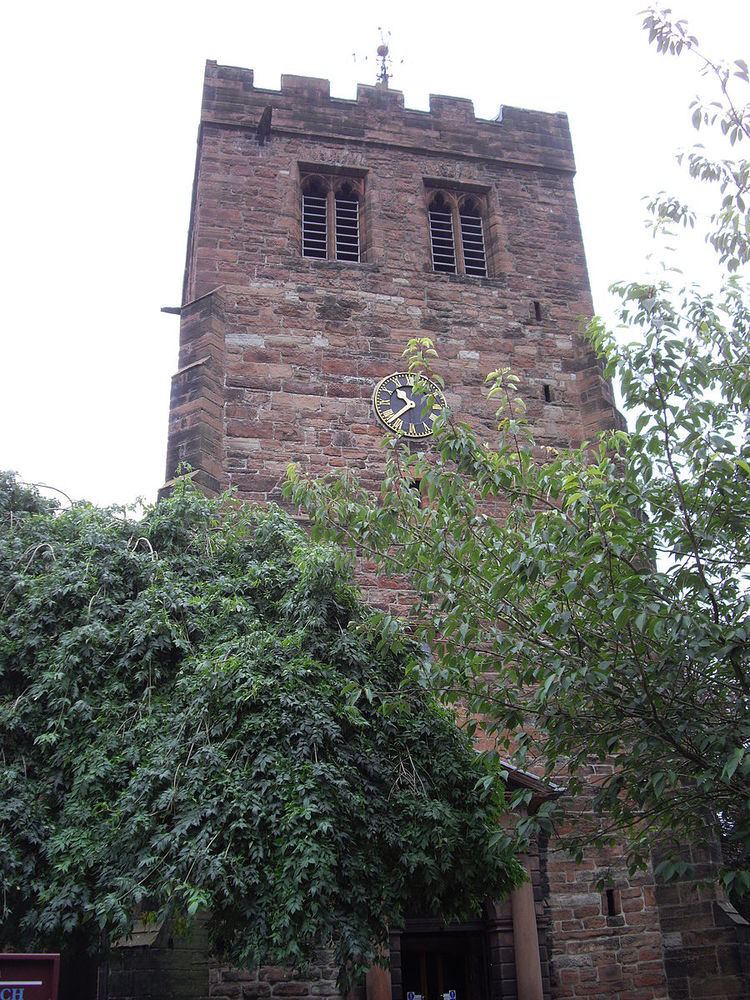OS grid reference NY 517 302 Country England Website [1] Phone +44 1768 862867 | Denomination Anglican Dedication Saint Andrew | |
 | ||
Similar Giant's Grave - Cumbria, Penrith Castle, Brougham Castle, Mayburgh Henge, Brougham Hall | ||
St Andrew's Church is in the centre of the town of Penrith, Cumbria, England. It is an active Anglican parish church in the deanery of Penrith, the archdeaconry of Carlisle, and the diocese of Carlisle. Its benefice is united with those of Christ Church, Penrith; St John, Newton Reigny and St John the Evangelist, Plumpton Wall. The church is recorded in the National Heritage List for England as a designated Grade I listed building. At one time St Andrew's had a chapel of ease in Brougham Street in the Castletown suburb of Penrith called St Saviours.
Contents
History
The tower dates from the 12th and 13th centuries, the top stage being either added or rebuilt in the 15th century. The rest of the church, together with the west doorway, was rebuilt in 1721–72, when the diagonal buttresses were added to the tower. The 18th-century rebuilding was almost certainly designed by William Etty of York.
Exterior
The tower is constructed in red sandstone rubble. Its lower part originally served a defensive purpose, being built with thick walls, no buttresses, very small windows, and no entrance. The bell openings are straight-headed with two lights. The west doorway has a Neoclassical surround, including a triangular pediment, a triglyph frieze, and Doric columns. The body of the church is built in red sandstone ashlar. It is in Georgian style, with an eight-bay nave, and a two-bay chancel terminating in a shallow square apse. Along the sides of the church are two tiers of round-arched windows separated by broad pilasters, and at the east end are three windows beneath a large arch. On the south wall of the church is a sundial.
Interior
Inside the church are galleries on the north, west, and south sides. These are carried on Tuscan columns, which rise to the ceiling as wooden quasi-Tuscan columns. At the east end of the church are paintings by Jacob Thompson of Penrith dated 1845 depicting the Angel and the Shepherds, and the Agony in the Garden. The communion table dates from 1722, and was lengthened in 1951. The brass chandeliers were given to the church in 1745 by the 2nd Duke of Portland in recognition of the part the town played in the defence against the Young Pretender. The pulpit consists of the top section of a former three—decker. At the back of the gallery are royal arms dated 1723 by Mathias Read. The font consists of a simple octagonal bowl, and is dated 1661. The stained glass in the east window of 11870 is by Hardman, and that in the north aisle, dating from 1889, is by Burlison and Grylls. Elsewhere are windows by Clayton and Bell, Powell's, G.J.Baguley, and by Cox, Sons and Buckley. The monuments include two coffin lids inscribed with foliated crosses, one dating from the 14th century, the other possibly from the 12th century. There are also two worn stone effigies from the 17th century.
The pipe organ was built with three manuals in 1887 by Wilkinson. It was rebuilt with two manuals in 1900 by Jardine, and further rebuilt in 1992 by Rushworth and Dreaper. There is a ring of eight bells. Five of these were cast in 1763 by Lester and Pack at the Whitechapel Bell Foundry, and the other three by John Taylor and Company of Loughborough.
